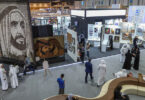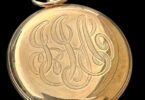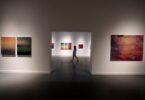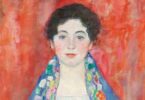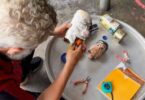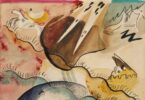Robert McKelvey
In a new exhibition launched this week, Lebanese architect and artist Nadim Karam examines the past three decades of his career, represented through a curated collection of sketches, paintings and sculptures.
Hosted at Abroyan Factories – a reclaimed textile factory from the 1930s – the Journal of Times | Journal of Present Times exhibition charts Karam’s artistic navigation of multiple tumultuous events both in and outside Lebanon, from post-Civil War unrest, the 2006 Lebanon War and the displacement of populations across the Middle East, to the recent Covid-19 pandemic, the Lebanese economic crisis and the August 4 Beirut Port explosion.
“For me, this is a journey on the threshold of a new departure,” Karam tells The National. “One might be astonished to find that an exhibition is happening at a time when a genocide is continuing in Gaza, and the South of Lebanon is being continuously bombarded, but I think that is why this exhibition is happening now; it reflects the suffering, the pain and the struggle, but also the joy, the hope and the continuity.”
“Beirut is a hub of creativity,” he says. “The trauma and the humiliation we have been through are significant for all of us, but the continuous creative resistance should stay at the forefront of what is happening. In the absence of any political vision for the country, those little stories happening in Beirut can create a better history for the country.”
Karam is best known for his site-specific projects in various cities – including Beirut, Prague, London, Tokyo, Nara and Melbourne – that engage with contextual issues and perceptions of diversity within society, often in a playful and absurdist manner.
However, his creative practice also extends through a variety of different mediums and techniques, often in introspective and deeply personal ways, as the artist seeks to process and document the events unfolding around him.
“I observe and draw and paint what is happening to our world,” says Karam. “It’s a continuous record of what is happening and a reflection on the actual condition of the human being.”
“This exhibition retraces Nadim’s journey, from the 1990s to the present day,” explains curator Nayla Tamraz. “When you see his monumental works in public spaces, you lose this link to his personal history. That is what this material represents; a ‘journal of times’ from his own perspective.”
The exhibition floor is divided into five sections, each charting a particular phase of Karam’s artistic progression. His 2009 multimedia tryptic panel Massacre serves as a stylistic anchor for the rest of the show, echoing the prevalent themes of violence, history and loss as its fluid figures traverse both sketch book pages and public spaces.
At times, Karam’s work has been highly controversial, provoking questions that range from aesthetic and institutional to political and ethical in nature. In exhibiting these works, there is an implicit understanding that one is inviting a return to these debates as well, potentially reopening old wounds.
One example is a series of paintings relating to The Gesture, a sculpture created by Karam in 2021, following the Beirut Port explosion. Installed at the site of the blast itself, and assembled from scrap metal retrieved from the destroyed hangars of the port area, the work immediately sparked a contentious debate among Beirutis about whether it was disrespectful and exploitative.
“That work is a kind of creative resistance and a memorial offered to the victims who died in the explosion and their families,” says Karam. “It reflects the ugliness of what happened, and the anger. But, at the same time, it brings back hope and tells us that the will to continue is always there.”
“We knew very well that showing these paintings could potentially start something but, if it didn’t, it would mean we had overcome this controversy,” says Tamraz. “Instead of being afraid of reactivating the discussion, we envisioned this exhibition as a place where this debate is possible.”
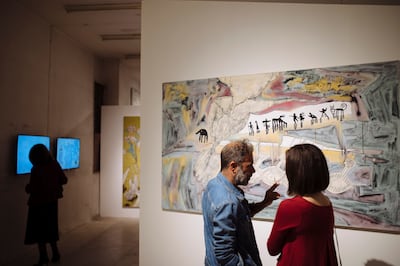
Despite so often engaging with moments of conflict and suffering in his art, Karam does not see his work representing negativity. Instead, he views his efforts as an attempt to remove and minimise violence from these events and redirect attention towards moving on towards better things.
“With what has happened to all of us – the trauma, the humiliation, the terrible sadness – I don’t think we should remain silent,” he says. “We should express it, in the strongest way. When you have a creative resistance to things, and not a destructive one, it means that you are seeking hope. The more they destroy, the more we create.
“I’ve received lots of comments about how this exhibition is giving hope to all of us in Lebanon, because we need something like this in these difficult times.”
Courtesy: thenationalnews


